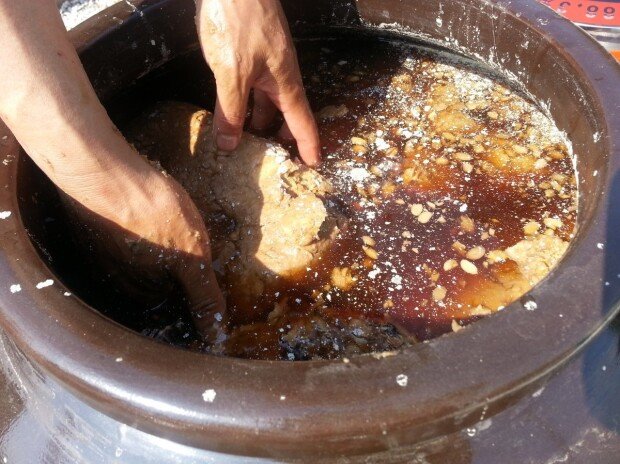Korea’s jang making set to join UNESCO’s Intangible Cultural Heritage List
Korea’s jang making set to join UNESCO’s Intangible Cultural Heritage List
Posted November. 06, 2024 08:28,
Updated November. 06, 2024 08:28

South Korea's traditional practice of “jang making,” which involves fermenting soybeans to create doenjang (fermented soybean paste) and ganjang (soy sauce), is set to be inscribed on UNESCO's Intangible Cultural Heritage of Humanity list. If the nomination is approved in December, South Korea’s 23rd cultural heritage will be added to this prestigious list.
According to the Cultural Heritage Administration on Tuesday, UNESCO’s Intangible Cultural Heritage Committee's evaluation panel recommended South Korea's “Jang-making culture” for inscription. Such recommendations are rarely overturned at the final decision stage. The Evaluation Body noted that "fermented bean products like doenjang, ganjang, and gochujang are essential to the Korean diet," adding that "the unique recipes within each household reflect family history and tradition." The final decision will be made during the 19th session of the Intangible Cultural Heritage Committee, held in Asunción, Paraguay, from December 2 to 7.
The Korean tradition of making jang dates back to the Three Kingdoms period. Historical texts, such as Samguksagi, mention that ‘jang’ and ‘shi’ (a type of jang) were included in provisions sent to the queen during the reign of King Shinmun of Silla (681-692). In the Joseon Dynasty, jang was held in such high regard by the royal family that a designated official, the Sanggung (Janggomama), was tasked with overseeing the janggo, the royal storage space for jang.
Jang making in Korea involves an intricate process, from cultivating soybeans and preparing meju (soybean blocks) to grinding, aging, and fermenting. Unlike methods in China or Japan, Korea’s traditional technique uniquely involves fermenting the soybean lump and incorporating a portion of aged jang from the previous year into the new batch, lending a distinct and rich flavor unique to Korean cuisine.
사지원기자 4g1@donga.com
Headline News
- Former commander's notebook includes potential plan to incite N. Korean attacks
- Constitutional Court to proceed with impeachment trial on Friday
- Deputy PM confirms next year’s under 2 percent growth projection
- Ukraine says Russia uses fake IDs to hide N. Korean troops
- Pres. Yoon refuses impeachment documents for a week






